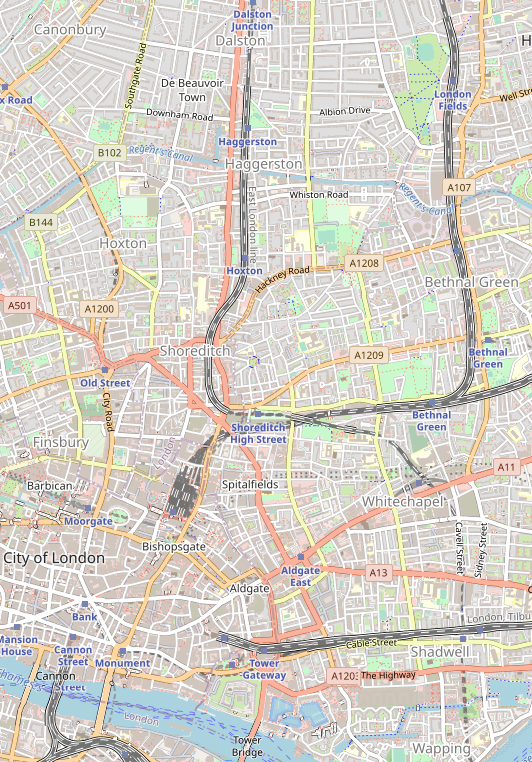
London is divided into 33 boroughs. It is often said that there are 32 boroughs. This is because the City, with its thousands of years of history and special laws, is considered more than just a borough. But here I will rather introduce localities that do not necessarily coincide with exactly one borough. It is rather a historical and emotional division, not exactly a legal one.
Central London is most touristy. West London is the fanciest. East London is the most eclectic. North London has the best outdoor stuff. South London is the most underrated.
For over a thousand years, the political and religious power of England has been concentrated here. This is also the reason why there are so many monuments compared to the rest of the city. Whitehall houses all government offices and ministries. To the north, Trafalgar Square marks the beginning of the West End, an area famous for its nightlife.
Here you will find attractions such as the Elizabeth Tower (more often mistakenly called Big Ben), Westminster Abbey, Westminster Cathedral and the Palace of Westminster.
If you walk north along Whitehall Street, important government offices will be on your left. The Prime Minister also lives there, but you are not allowed on this side street (Downing Street). On the right hand, there were once the parliament buildings, but they were destroyed in a long-ago fire, but there are also government offices now. About the middle of the street is the Banqueting House (a two-story house, seven windows with tiny squares in a row). In front of it was once the scaffold where King Charles I was executed. If you turn around and swing slightly to the right, you will see a house with a clock on top. Take a closer look at this clock, there is a black spot on the dial at number 2. It marks the time of the king's execution.
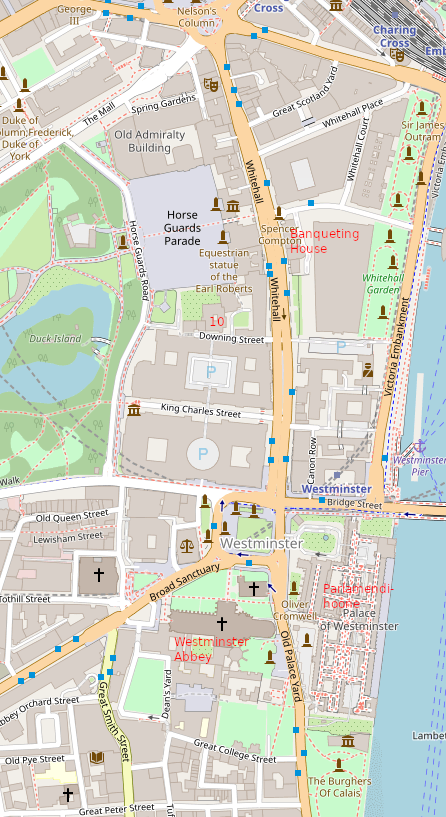
Piccadilly Circus and St James's are the highlights of the West End. Since the 18th century, it has been the residence of the aristocracy, as well as an important place to shop. The most elegant part so far is Mayfair. There are the most five-star hotels. Piccadilly Circus is the area to the north of which is Soho.
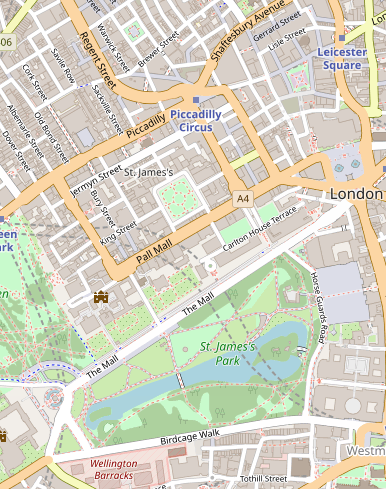
This area was fully built up in the second half of the 17th century. From the beginning of the 19th century, it is one of the most elegant parts of the city. There are many taverns and pubs here. Currently, it is one of the most liberal and multicultural places in the city. It's also home to London's gay scene. Part of the area includes the exotic Chinatown. Once upon a time, this area had a reputation as a dangerous place, but nowadays you can safely explore it.
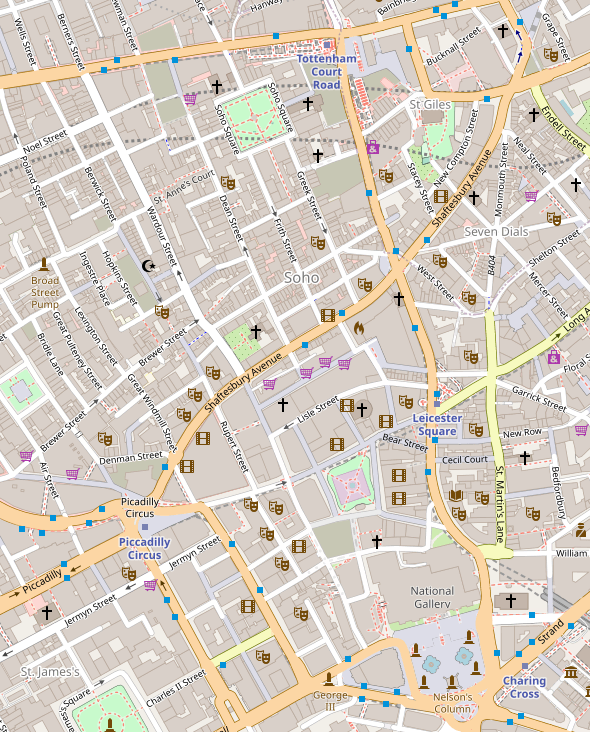
A very interesting place in London. Known for its outdoor cafes, street artists, boutiques and market. The centre is Covent Garden Piazza, designed by Iñigo Jones in 1630. It was the first comprehensively planned modern square in the city. The market is definitely worth a visit. At least for the impression, not necessarily to buy anything.
If you're going to Covent Garden, don't use the Underground station of the same name. It was designed at a time when the locality was quite remote and there are no escalators. Better use the Leicester Square station, the walk is only 250 meters. Or walk through the street called Strand. There are many interesting buildings.
To the west of the market is St Paul's Church, not to be confused with the cathedral of the same name. This church is interesting in that the main door was originally built on the east side to open onto the square. The customer was not satisfied with such a violation of traditions, a new door was made on the west side and the door on the square was walled up.
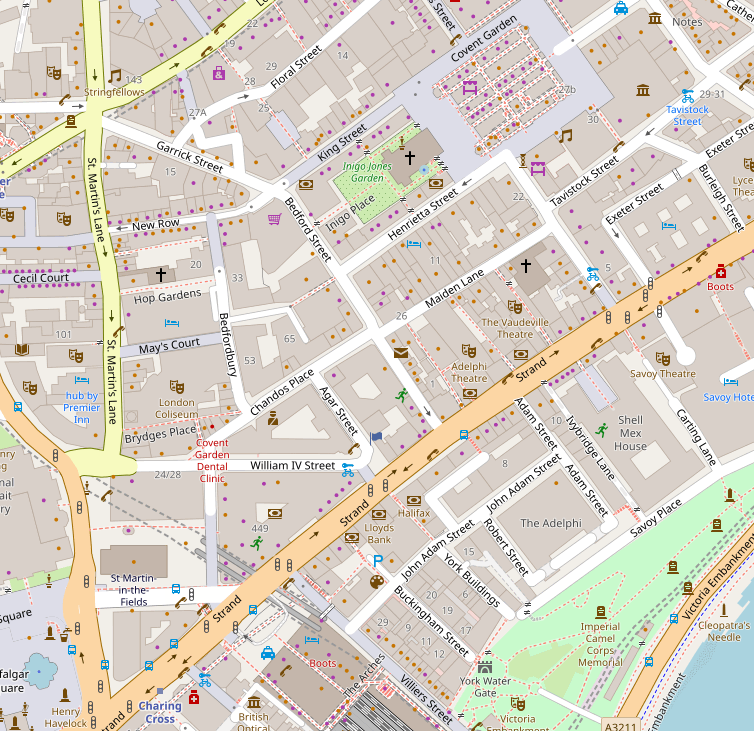
Many writers live here and there are many libraries. Here you can find the University of London, the British Museum and many beautiful little parks from the era of King George. Russell Square is a beautiful park. Virginia Woolf once lived near it (29 Fitzroy Square).
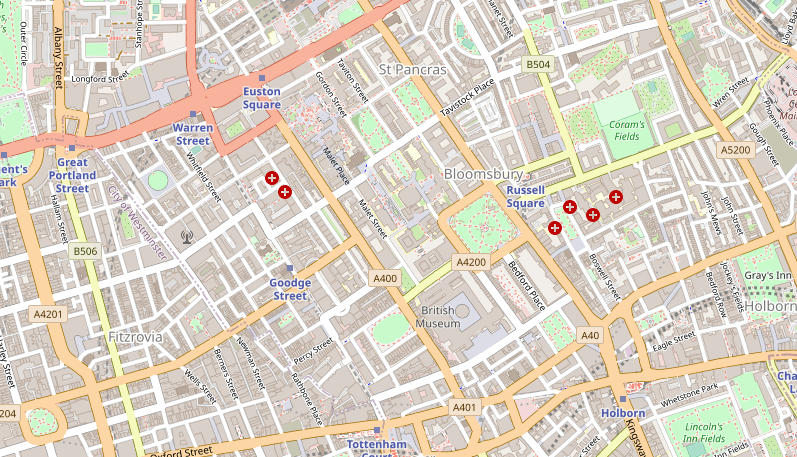
Lawyers and journalists live in this area. The Royal Courts of Justice and Inns of Court are located here. Lincoln's Inn, one of four places known as the Inns of Court, has been home to many world-famous men. Some houses were built before the great fire in 1666. Holborn was once a commercial centre.
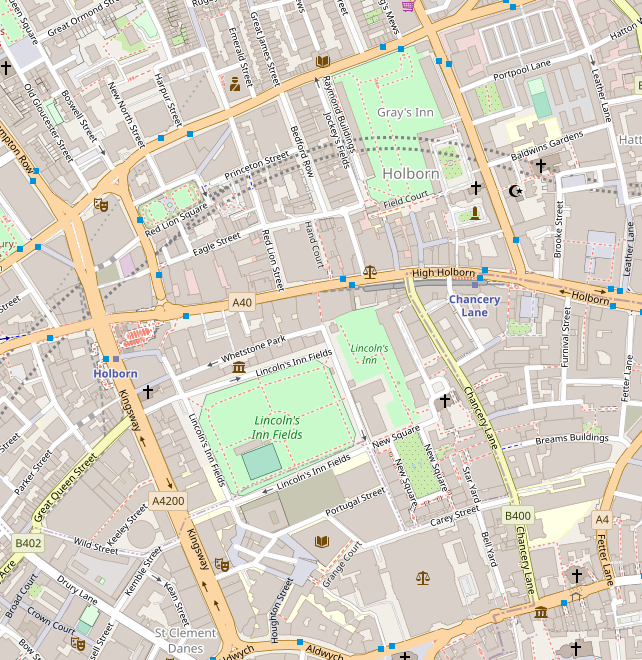
The City is the economic centre of London. The Bank of England and the Stock Exchange are located here. The area is crowded on weekdays, seems quieter on weekends, rather for tourists.
Here the Romans built a city called Londinium. After the Great Fire of 1666, Sir Christopher Wren oversaw the building of 52 new churches in London, many right here and still standing today. Due to the influence of WWII, some of these are only in ruins. During the 19th century, it was the most sought-after residential area. Currently, there are few residents here. City is a mix of modern glass skyscrapers and century-old houses.
The main attractions are St. Paul's Cathedral, Tower and Tower Bridge.
In the meaning of locality, City is written with a capital letter. Unfortunately, this cannot be understood in oral speech. Since the surface area of the area happens to be 1.05 square miles, the name Square Mile is often used in communication.
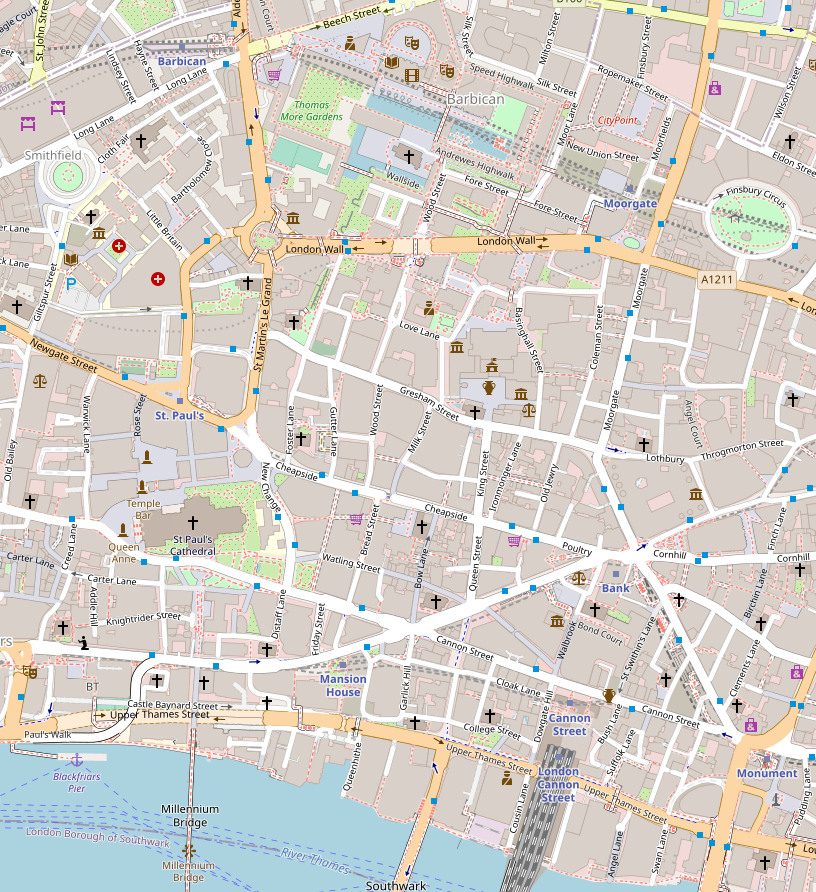
A historic site in London, north of the City, here those who were not welcome in the City found refuge. In the seventeenth century, the Huguenots, as well as other immigrants from Europe and Bengal, found a home and built factories here. They brought something new to London's cooking and religion. For example, look at Fournier St across the street east of the market. The houses there have unusually large windows. Immigrant craftsmen did their work at home, and it required a lot of light.
Here you will find one of the city's oldest churches, Jacobean houses, the remains of the old city wall and London's only wholesale market.
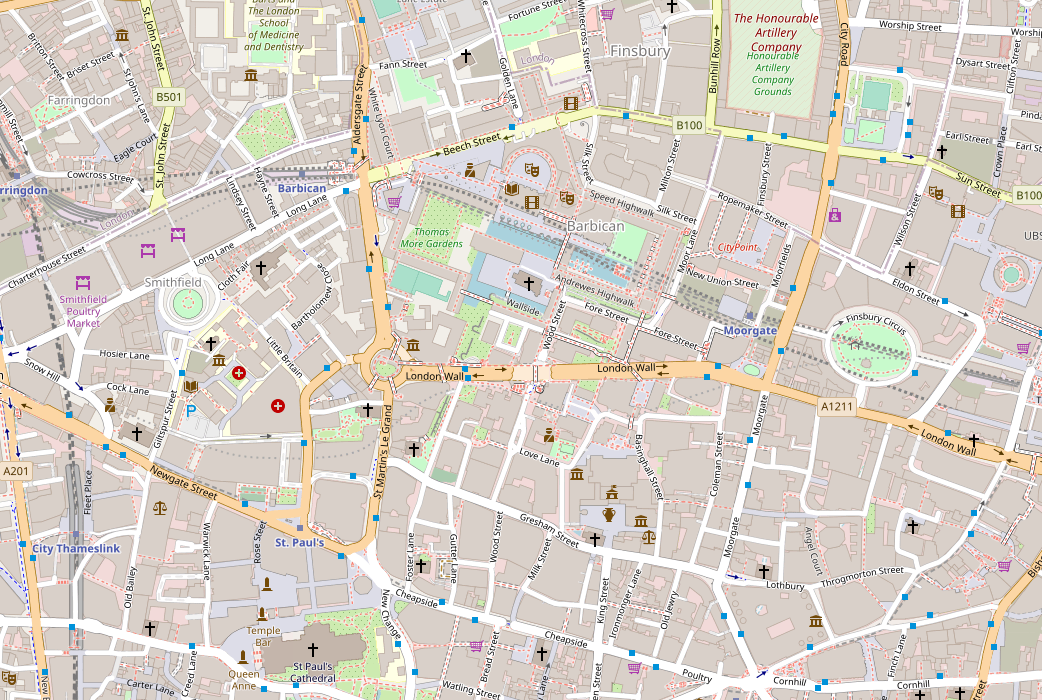
From the Middle Ages to the 18th century, Southwark was a trendy district. The place was outside the scope of the City's laws, and many things were allowed there. Here was Shakespeare's Globe Theatre. The original building has been destroyed, but an exact copy has been built a hundred meters away. In the 18th century, docks, factories and warehouses were built here
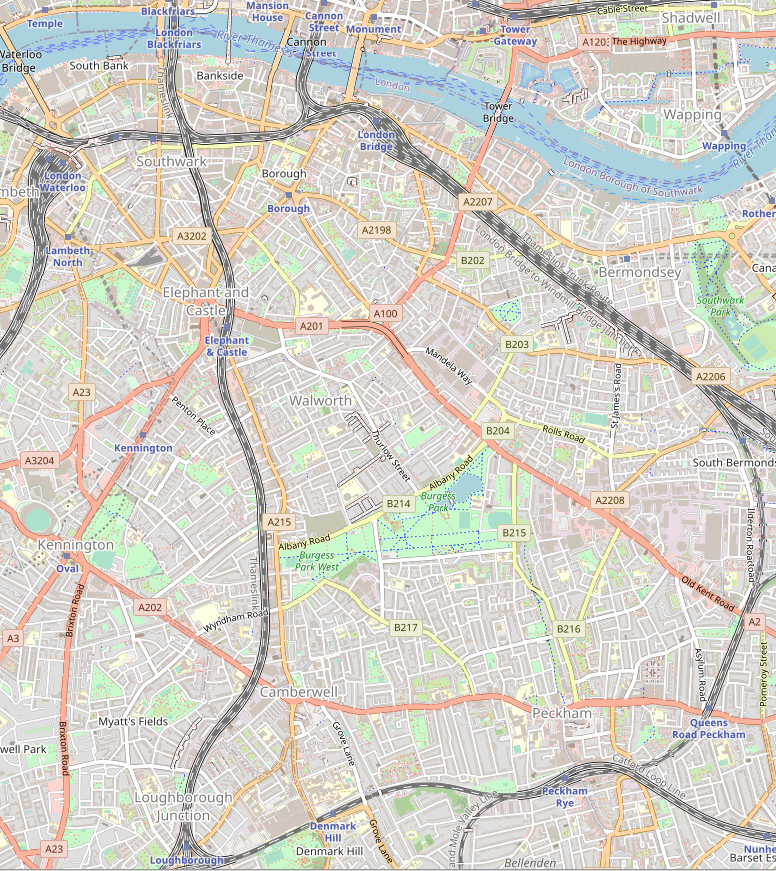
This area was badly damaged by the bombing of WWII. In 1951, the Festival of Britain was organized here, for which several buildings were built. But of these, only the Royal Festival Hall remains.
The London Eye is also located here.

During the Tudor dynasty, there was a small village here, but it was quite a popular place to live. For example, Thomas More and King Henry VIII have lived here. Many artists also loved this place. In the 18th century, courtesans strolled the gardens and the Chelsea Arts Club hosted rather scandalous parties. Later, this place has been popular among musicians, Keith Richards, Mick Jagger and Bob Marley have lived here. For artists, this place is perhaps too high-priced these days, but there are many galleries and art shops here. King's Road runs through the centre of the district. The shops there are in no way inferior to the shopping streets in the city centre in terms of quantity and goods.
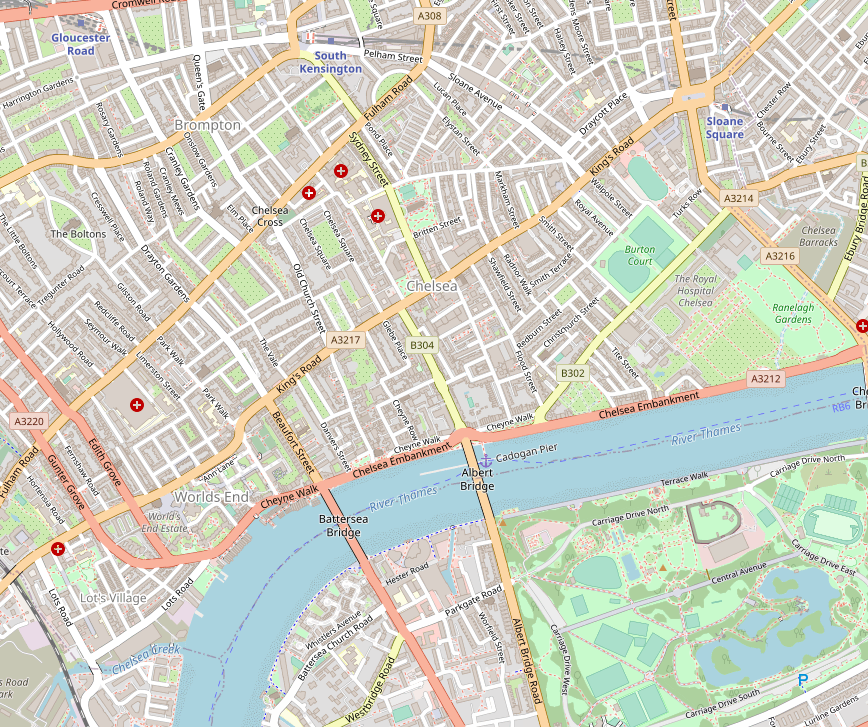
South Kensington and Knightsbridge is an upmarket area with many embassies and consulates. Due to its proximity to Kensington Palace, this area has not changed much over the centuries. Knightsbridge is home to the rich and has many luxury shops. The area is also of cultural importance as it is home to several museums and universities.
Here you will find a lot to see: Kensington Palace, Royal Albert Hall, Albert Memorial monument, Victoria and Albert Museum, the Natural History Museum, the Science Museum and Hyde Park.
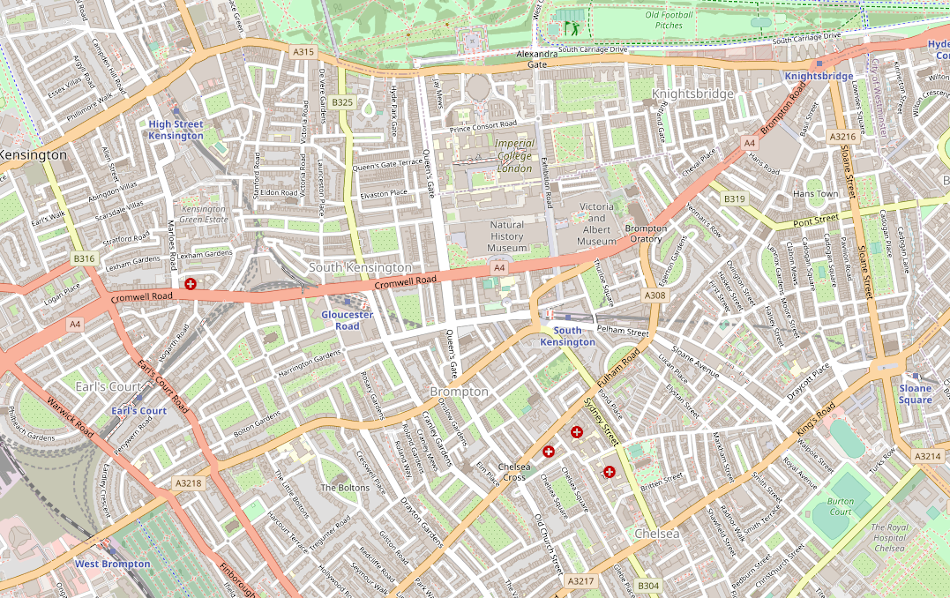
Until 1830, it was a rural area with a market and Victorian cottages. Then Lord Holland built a manor here, the centre of which was Holland House, where the park that gave the area its name is now located. Most of the houses here date from the nineteenth century. Luxury residences are located in the west and north. There are also many embassies of foreign countries. Local shops are as good as those in Knighstbridge.
The main street, Queensway, is crowded and metropolitan, with many cafes and restaurants. Featured keywords: Portobello Market, Notting Hill and Holland Park.
Holland Park is smaller than, for example, Hyde Park, but also much more diverse. There are such gorgeous buildings, children's playgrounds, sports fields and also quite dense native forest. There are two other tiny Japanese-style parks inside the park.
Portobello Road street market is one of the many street markets in London, but it stands out from these with an elusive atmosphere. Worth to see.
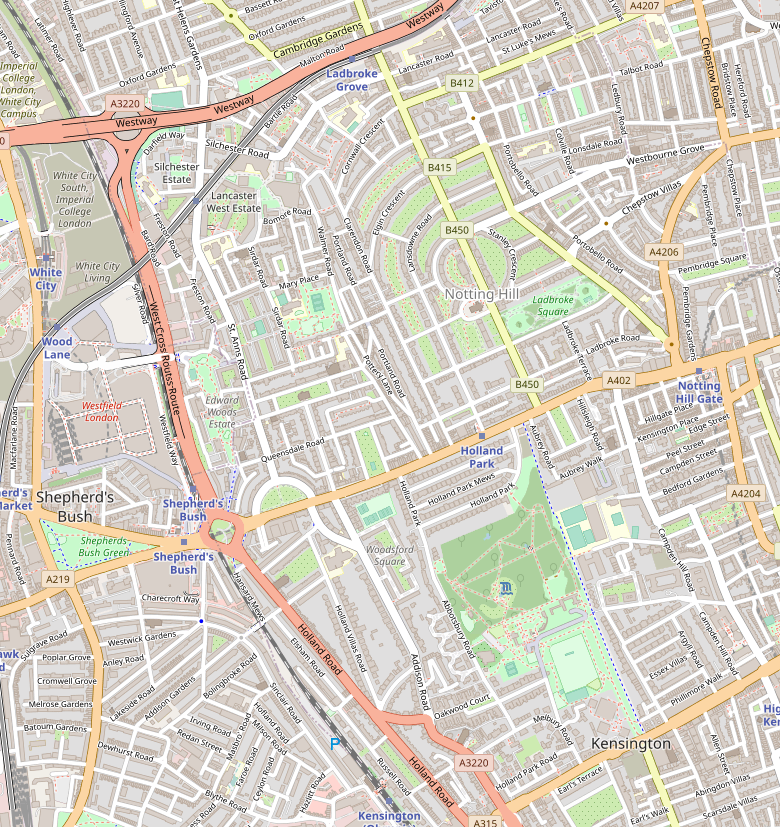
Marleybone was a medieval village south of Regent Park. Until the 18th century, this area was surrounded by fields and gardens. Later, many magnificent houses were built here, many of which housed doctors. Until now, this place has retained many connections with medicine.
Of course Regent Park is amazing. There is also a zoo, which is fascinating, although its area is small. The zoo is also fascinating in that it is crossed by a large motorway and a navigable canal. Different separate parts are connected by tunnels and bridges. You can even spend the night near the lion cages in the zoo, but it costs quite a lot.
To the north is Primrose Hill, which is quite tiring to climb, but offers a magnificent view both day and night.

An observatory is located in Greenwich and the prime meridian of the same name passes through it. There is also the National Maritime Museum.
A royal palace was also built here, but the only surviving building from it is the Queen's House (designed by Iñigo Jones for the wife of King James I). Greenwich has a market, park, library and antique shops.
Of course, there is also an observatory here, where you can spend money, but you can also see a lot of interesting things for free. Including an amazing panoramic view, a rose garden and, if you're looking for it, the former queen's bath. 

Full of hipster cafes, cool pubs, street art and good markets. Many old industrial buildings have become restaurants and clubs. Old Street is known as the "Silicon Roundabout" because it is home to many tech start-ups. Spitalfields Market is famous for clothes, art and good food.
